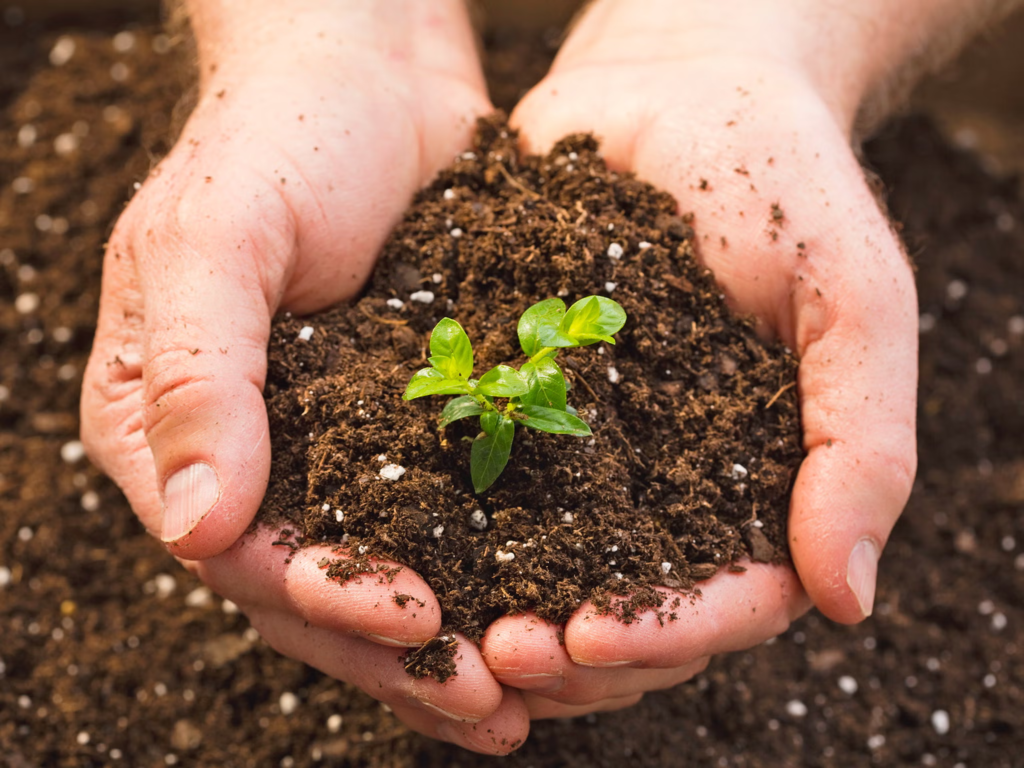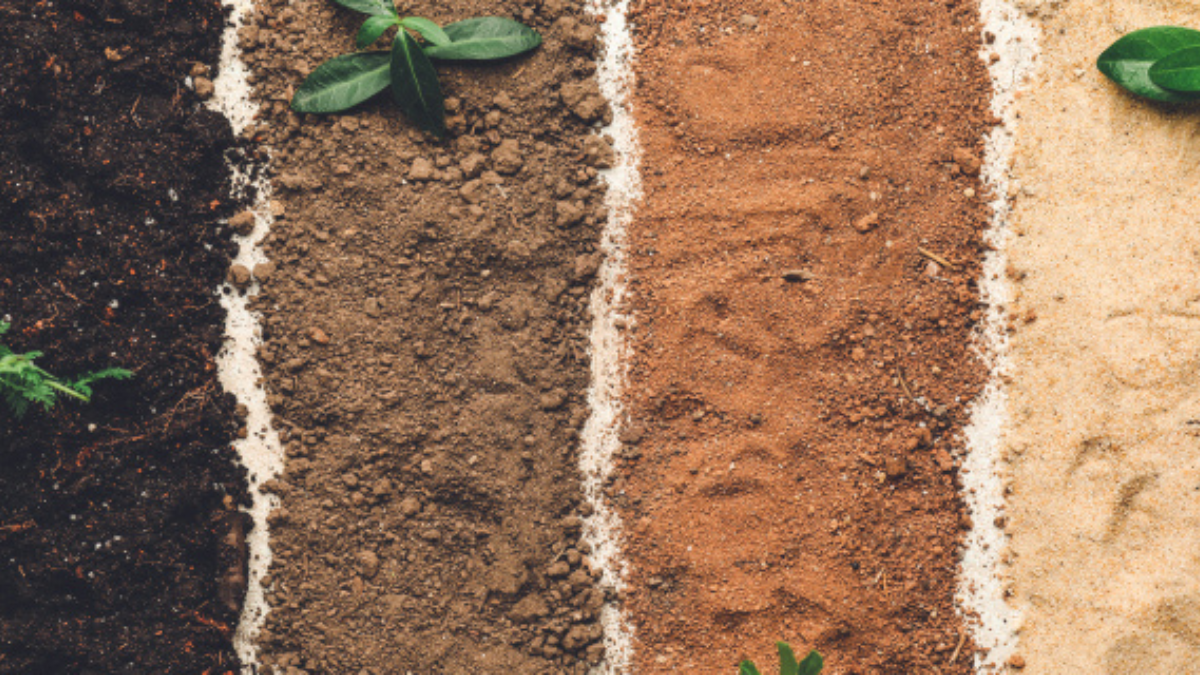When it comes to gardening, soil serves as the foundation for plant growth. It provides essential nutrients, moisture retention, and proper root development. Different soil types possess unique qualities that influence their suitability for specific plants. By familiarizing yourself with these soil types, you can make informed decisions to maximize your garden’s potential.
Soil Moisture Meter,4-in-1 Soil Ph Meter, Soil Tester for Moisture, Light,Nutrients, pH,Plant Care Tools, Great for Garden, Lawn, Farm, Indoor & Outdoor Use (No Battery Required)
$15.99
2. Understanding Soil Composition
2.1. The Importance of Soil for Gardening
Soil is a complex mixture of minerals, organic matter, water, air, and countless organisms. Its composition directly affects plant health, growth, and yield. By comprehending soil composition, gardeners can optimize their gardening techniques and create the ideal growing conditions.
2.2. Basic Components of Soil
Soil primarily consists of three basic components: mineral particles, organic matter, and pore spaces. Mineral particles provide the soil’s structure and are categorized based on size—sand, silt, and clay. Organic matter includes decomposed plant and animal materials, enriching the soil with nutrients. Pore spaces allow water, air, and plant roots to move through the soil.

3. Different Types of Soil for Gardening
There are several soil types commonly found in gardens, each with distinct characteristics and advantages. Let’s explore these soil types:
3.1. Sandy Soil
Sandy soil has a gritty texture and drains quickly. While it warms up early in the season, it struggles to retain moisture and nutrients. Despite these challenges, certain plants like cacti, carrots, and sunflowers thrive in sandy soil due to its excellent drainage properties.
3.2. Clay Soil
Clay soil has a fine texture and retains moisture well, but it can become compacted and poorly drained. It tends to be nutrient-rich but requires careful management to avoid waterlogging. Plants such as asters, hostas, and primroses can tolerate the heavy nature of clay soil.
3.3. Loam Soil
Loam soil strikes a balance between sand, silt, and clay. It has a crumbly texture, good drainage, and excellent moisture retention. This soil type is often considered ideal for gardening, supporting a wide range of plants with proper amendments.
3.4. Silt Soil
Silt soil consists of fine particles and offers good water retention. It is easily compacted and prone to erosion, making proper management crucial. Plants like peas, cabbage, and lettuces can thrive in silt soil with adequate care.
3.5. Peat Soil
Peat soil is high in organic matter and forms in wet, boggy areas. It retains moisture well but can become acidic. Acid-loving plants like rhododendrons, azaleas, and blueberries thrive in peat soil.
3.6. Chalky Soil
Chalky soil contains a high percentage of calcium carbonate and tends to be alkaline. It drains well but can be shallow and low in nutrients. Plants such as lavender, thyme, and yarrow are well-suited to chalky soil.
3.7. Sandy Loam Soil
Sandy loam soil is a combination of sandy and loam soil, offering good drainage and moisture retention. It is suitable for a wide range of plants, including tomatoes, peppers, and beans.
3.8. Silty Clay Soil
Silty clay soil contains a higher proportion of silt and clay. It is typically fertile but requires proper management to prevent compaction. Plants like corn, okra, and broccoli can grow well in silty clay soil.
3.9. Peaty Clay Soil
Peaty clay soil is rich in organic matter and can retain moisture effectively. It requires good drainage to prevent waterlogging. Plants such as potatoes, horseradish, and celery thrive in this type of soil.
3.10. Loamy Sand Soil
Loamy sand soil consists of sand and loam in balanced proportions. It drains well but requires careful management to retain moisture. Many vegetables, including carrots, radishes, and lettuce, perform well in loamy sand soil.
3.11. Clay Loam Soil
Clay loam soil is a combination of clay and loam soil, offering a balance between water drainage and retention. It is suitable for a variety of plants, including apples, pears, and cherries.
4. Assessing Soil Types
Understanding your soil type is crucial for successful gardening. Here are some methods to assess soil types:
4.1. Identifying Soil Type
You can identify your soil type by conducting a simple texture test. Collect a soil sample, moisten it, and observe its texture. Sandy soil feels gritty, clay soil feels sticky, and loam soil has a crumbly texture.
4.2. Testing Soil Drainage
To determine your soil’s drainage, dig a hole and fill it with water. If it drains within a few hours, you likely have well-draining soil. If it takes more than 24 hours to drain, you may have poorly draining soil.
4.3. Soil pH Testing
Soil pH affects nutrient availability to plants. You can test your soil’s pH using a home testing kit or by sending a sample to a local agricultural extension service. Adjusting pH levels can be done through soil amendments.

5. Matching Soil Types with Plants
Choosing the right plants for your soil type is essential for their success. Here are some plant recommendations based on different soil types:
5.1. Best Plants for Sandy Soil
Plants that thrive in sandy soil include lavender, rosemary, sedum, and black-eyed Susan. These plants are adapted to drought-like conditions and can tolerate fast-draining soil.
5.2. Suitable Plants for Clay Soil
For clay soil, consider planting astilbes, daylilies, hostas, and hellebores. These plants can handle the heavy, moisture-retentive nature of clay soil.
5.3. Recommended Plants for Loam Soil
Loam soil is versatile and suits a wide range of plants. Some excellent choices include tomatoes, peppers, zinnias, and marigolds.
5.4. Planting Options for Silt Soil
Silt soil benefits from plants like spinach, lettuce, peas, and coleus. These plants can tolerate the finer particles and moisture retention of silt soil.
5.5. Thriving Plants in Peat Soil
Rhododendrons, blueberries, heathers, and ferns are ideal for peat soil. These acid-loving plants can flourish in the high organic matter content of peat soil.
5.6. Choosing Plants for Chalky Soil
Plants that adapt well to chalky soil include lavender, thyme, yarrow, and rock roses. These plants are accustomed to alkaline soil conditions.

6. Improving and Amending Soil
To enhance your soil’s quality and address specific challenges, you can employ various techniques:
6.1. Organic Matter and Compost
Adding organic matter like compost, well-rotted manure, or leaf mold improves soil structure and enhances nutrient retention.
6.2. Adjusting Soil pH
If your soil pH is too acidic or alkaline for the desired plants, you can adjust it by adding appropriate amendments such as lime or sulfur.
6.3. Mulching Techniques
Applying organic mulch like wood chips or straw helps regulate soil temperature, retain moisture, and suppress weed growth.
6.4. Proper Soil Drainage
To improve drainage in heavy soils, incorporate coarse sand or organic matter into the top layers. For poorly draining soils, create raised beds or use drainage solutions like French drains.
7. Conclusion
Understanding the different types of soil for gardening is key to successful plant cultivation. By recognizing the characteristics and advantages of various soil types, you can match them with suitable plants, optimize soil conditions, and ensure healthy and bountiful gardens. Remember to assess your soil type, make necessary amendments, and select plants that thrive in your specific soil conditions.
FAQs
1. Can I use any type of soil for gardening?
No, different plants have specific soil requirements. It is essential to choose a soil type that suits the plants you intend to grow.
2. How can I improve sandy soil?
To improve sandy soil, add organic matter such as compost or well-rotted manure to enhance its nutrient and moisture-retaining capacity.
3. Is clay soil bad for gardening?
Clay soil can be challenging to work with due to its heavy nature and potential for poor drainage. However, with proper management and plant selection, it can be productive for gardening.
4. How do I know if my soil is acidic or alkaline?
You can determine your soil’s pH by using a soil testing kit or by sending a sample to a local agricultural extension service.


